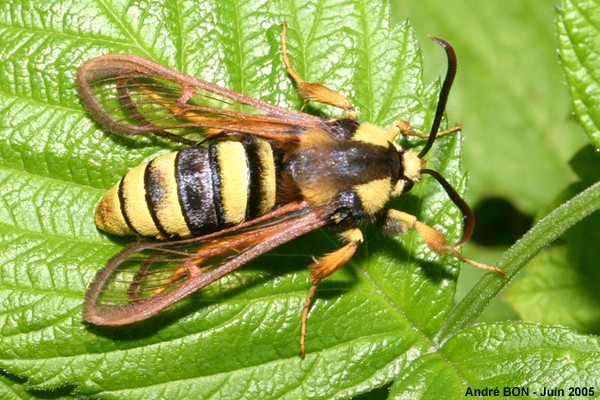
| Hornet Moth (Sesia apiformis (Clerck, 1759)) |

|
|
Scientific name: Sesia apiformis (Clerck, 1759) Common name: Hornet Moth French name: Sésie frelon, Sésie du peuplier Order: Lepidoptera Suborder: Heterocera Family: Sesiidae Subfamily: Sesiinae Wingspan: 35 mm Biotope: Poplar groves and poplar tree neighbourhood. Geographic area: All Europe from Finland to the Mediterranean area, Middle East, Asia Minor, China. Flight time: May to August. Number of generations : 1 Caterpillar: The caterpillar is xylophagous and attacks poplar trees (base of the trunk and roots). It's lifecycle lasts 2 years, sometimes 3. Host plant: Poplar trees (Populus) and sometimes Willow trees (Salix). |
You can observe the Hornet Moth during the day and in the sunshine. The body has yellow and black rings. The wings are thin and clear with dark edges. "Apiformis" comes from the latin word "apis": bee. This harmless moth mimics a Hornet or a big Bee. This is a good example of mimetic resemblance. Predators will then stay at a good distance. You can usually see Hornet Moths in the vicinity of poplar plantations. |
| [To know more about the Hornet Moth] [Top] |

|
This Hornet Moth, landed on a raspberry leaf, was resting in the sunshine. It is certainly coming from the poplar tree located less than 10 meters from here. |